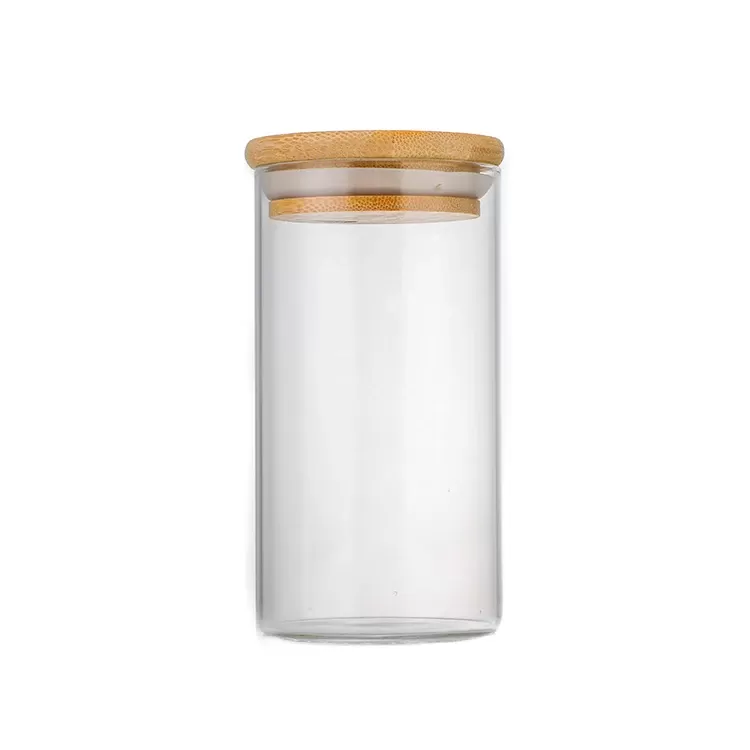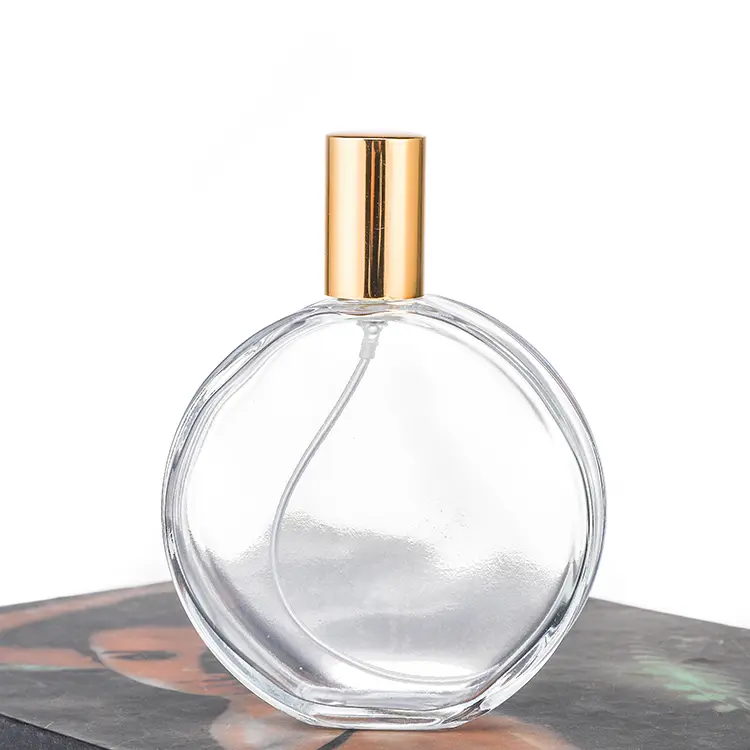The Crystal Clear Choice: Top Reasons Why Perfume Bottles Are Made of Glass
06-20-2025
Have you ever paused to admire a beautifully crafted perfume bottle, feeling its cool, substantial weight in your hand? There's an undeniable allure to it. As Allen, the owner of a glass packaging factory with seven production lines, I've dedicated my career to understanding this very magic. For years, we've been a key supplier to brands across the USA, Europe, and Australia. This article isn't just a list of facts; it's an inside look from the factory floor. I'll explain precisely why glass remains the undisputed champion for perfume, a choice that protects the precious liquid inside while conveying a powerful message of luxury and quality. For procurement leaders like Mark Thompson, who are always searching for that perfect balance of quality and cost, this information is crucial for making informed, profitable decisions.
Why is Glass the Unquestionable Material for Perfume Bottles?
When it comes to housing a complex and delicate creation like a perfume, the container is just as important as the contents. The primary reason the perfume industry has trusted glass for centuries is its chemical stability. A perfume is a volatile mixture of essential oils, aroma compounds, and solvents. The last thing a brand wants is for the packaging to interfere with this carefully balanced formula. Unlike some materials, glass rarely reacts with its contents. This means the scent you experience when you first open the perfume bottle is exactly as the perfumer intended, pure and untainted.
From my experience in glass production, this inertness is the cornerstone of glass packaging for sensitive products. A plastic bottle, for instance, can sometimes leach chemicals over time or be permeable to air, which can subtly but surely alter a fragrance profile. For a high-end perfume, such a change is unacceptable. The integrity of the perfume must be absolute from the moment it's bottled until the final spritz. Therefore, glass is one of the few materials that can guarantee this long-term preservation, making it the default material of choice for any serious perfume brand. This commitment to quality is why we focus on producing high-quality glass that our clients can trust.

How Does a Glass Bottle Preserve the Delicate Scent of a Perfume?
Beyond its chemical inertness, the physical properties of glass make it a formidable guardian for any perfume. Two of a perfume's greatest enemies are light and air. Oxygen can cause the volatile oils in a perfume to oxidize, breaking them down and changing the scent. Similarly, UV rays from sunlight can rapidly degrade the fragile molecules that create the fragrance's signature notes. A well-made glass bottle acts as a sealed, impermeable barrier, keeping damaging oxygen out and the precious aroma in.
To further combat the effects of light, many perfume brands opt for colored or opaque glass. You'll often see perfume in dark amber, cobalt blue, or even completely black bottles. These colors are not just stylistic choices; they are functional, designed to block out harmful UV light. In recent years, innovation has led to materials like violet glass bottles, which are specially designed to filter out the most damaging spectrum of visible light while allowing beneficial violet and infrared light through. Furthermore, advancements like airless bottles with glass casings offer the ultimate protection by preventing air from entering the perfume bottle even during use, ensuring the quality of the perfume remains pristine to the very last drop.
What is the Rich History of the Glass Perfume Bottle?
The connection between perfume and glass is not a modern invention; it's a love story that spans millennia. The evolution of perfume and its containers are intertwined. The ancient Egyptians, masters of both perfume and early glass production, stored their precious unguents in ornate glass vessels. These early perfume containers were seen as objects of immense luxury and status. The Romans continued this tradition, and with the expansion of their empire, the use of glass for perfume spread.
The true artistry of the glass perfume bottle blossomed in Venice during the Renaissance. Venetian artisans perfected glass blowing techniques, creating intricate and beautiful bottles often adorned with gold and enamel. These pieces were as coveted as the perfume they held. This era cemented the idea that a perfume bottle should be a work of art. As you look at an antique perfume bottle from the 18th or 19th century, you're not just seeing a container; you're seeing a piece of history that reflects the aesthetic and technological advancements of its time. The history of glass perfume shows us that the perfume bottle has always been more than mere packaging.
How are Modern Glass Perfume Bottles Made?
Today, making perfume bottles is a blend of age-old principles and cutting-edge technology. As a factory owner, I oversee this fascinating process daily. It all begins with the raw materials used in glass production: silica sand, soda ash (sodium carbonate), and limestone. These are heated in a furnace to over 1500°C (2700°F) until they melt into a glowing, viscous liquid—molten glass.
This molten glass is then precisely portioned and fed into molding machines. Here, a two-stage process typically occurs:
- Blank Mold: A blast of compressed air pushes the glass into a preliminary shape called a parison.
- Blow Mold: The parison is transferred to the final mold, where another blast of air expands it to the exact shape of the
perfume bottle. Theperfume bottle designis born in this step.
After molding, the bottles are not yet finished. They must go through a controlled cooling process called annealing. This is where the glass quality is locked in. The bottles are passed through a long oven, called a lehr, which slowly cools them over several hours. This process relieves internal stresses in the glass, making the final glass bottle strong and durable. It’s a critical step; without it, the perfume bottles may shatter from the slightest temperature change. This precision in perfume bottle manufacturing ensures every perfume bottle we ship is a testament to quality.

Why Do Luxury Brands Insist on Using Using Glass for Perfume?
Walk through any high-end department store, and you'll notice one thing: luxury brands use glass. This isn't a coincidence. Glass is synonymous with luxury, and in the competitive perfume market, perception is everything. A high-end perfume is an aspirational purchase, an affordable entry into a world of luxury. The packaging must reflect that. The cool touch, clarity, and substantial weight of glass immediately convey a sense of luxury and permanence that other materials simply cannot match.
Brands invest millions in developing a unique perfume scent, and they invest just as much in the perfume bottle that will represent it. A perfume bottle is a brand's ambassador on the shelf. Its design tells a story and evokes an emotion before the customer even smells the perfume inside. Consumers perceive glass bottles as being of higher quality and value, which justifies a higher price point. When a customer decides to buy perfume, they are buying an experience, and the beautifully designed glass perfume bottle is a huge part of that experience, a keepsake to be displayed long after the perfume is gone.
What Customization Options Exist for Glass Perfume Bottles?
One of the greatest advantages of using glass for perfume bottles is its incredible versatility in design. Modern manufacturing perfume bottles allows for a breathtaking array of customization options, enabling brands to create truly unique bottle designs that capture their essence. Glass can be molded into virtually any shape imaginable, from classic, elegant silhouettes to bold, architectural forms. This is where we, as a factory, collaborate closely with brands to bring their vision to life.
Here are just a few of the customization techniques we employ:
| Customization Technique | Description |
|---|---|
| Coloring | Glass can be colored during the production process for a solid, deep color, or it can be spray-coated for gradient or opaque effects. |
| Frosting | A chemical treatment or sandblasting process that gives the glass a soft, matte, and premium texture. |
| Screen Printing | Allows for intricate, multi-colored logos and designs to be printed directly onto the glass bottle surface. |
| Hot Stamping | A process that uses heat and pressure to apply metallic foils (like gold or silver) for a reflective, luxurious finish. |
| Embossing/Debossing | Creating raised (embossed) or indented (debossed) designs directly in the glass during the molding stage. |
These techniques allow for endless combinations, creating perfume bottle packaging that is truly unique. Whether a brand wants a minimalist elegant custom perfume bottle or an extravagantly detailed one, customized glass makes it possible. This ability to create a signature look is fundamental to branding in the world of perfume.

Are Glass Perfume Bottles an Environmentally Friendly Choice?
In today's world, sustainability is a major concern for consumers and brands alike. Fortunately, glass is an exceptionally environmentally friendly packaging material. The key benefit of glass is that it is 100% and infinitely recyclable without any loss of quality or purity. A glass bottle can be melted down and reformed into a new glass bottle over and over again. This "closed-loop" system significantly reduces the need for raw materials and saves a tremendous amount of energy compared to producing new glass from scratch.
Many factories, including ours, are increasingly using recycled glass, known as cullet, in our production mix. Using cullet not only conserves natural resources like sand and soda ash but also lowers the melting temperature required in the furnace, further reducing our carbon footprint. When brands prefer glass, they are choosing a material that aligns with a circular economy, offering consumers a perfume bottle that is not only beautiful but also responsible.
What Should You Look for When Sourcing Glass Perfume Bottles?
For a procurement officer like Mark, sourcing glass products from overseas can be a daunting task. Having been on the other side of these conversations for decades, I understand the pain points. Here is what you should focus on to ensure a smooth and successful partnership with a reliable supplier of glass packaging.
- Rigorous Quality Inspection: Don't just rely on a final report. Ask about the supplier's in-process quality control. How do they check for flaws like bubbles, uneven wall thickness, or surface imperfections? At our factory, we have checks at every stage, from the
molten glassto the final annealedperfume bottle. - Verifiable Certifications: Certificate fraud is a real problem. When a supplier claims FDA compliance or provides an ISO 9001 certificate, ask for the certification number and the issuing body. A reputable supplier will provide this information without hesitation. We pride ourselves on transparency and provide full documentation for all our products, including our popular
glass jarandchild-resistant bottles. - Clear and Efficient Communication: Inefficient communication is the root of most supply chain issues, especially shipment delays. Your sales representative should be knowledgeable, responsive, and fluent in your language. They should be a partner who proactively solves problems, not just a message-taker. We train our team to be solutions-oriented to prevent the kind of delays that can derail a product launch.
- Logistics and Payment Expertise: A good supplier understands international logistics. They should be able to provide clear FOB (Free on Board) or CIF (Cost, Insurance, and Freight) pricing and work with reliable freight forwarders. Similarly, they should offer secure and flexible payment methods, such as Telegraphic Transfer (T/T) or a Letter of Credit (L/C), to protect both parties.
Finding a supplier who excels in these four areas will transform your sourcing from a point of stress into a strategic advantage.
What Other Materials are Used in Perfume Bottles?
While glass is the dominant material for perfume bottles, it's not the only one. Understanding the alternatives helps to highlight why glass is so often the best choice. The most common alternative is crystal glass, which contains lead oxide or other metal oxides. This gives it a higher refractive index, resulting in a brilliant sparkle and a heavier feel. Crystal is often used for the most luxurious, limited-edition perfume releases, but it's significantly more expensive and less durable than standard perfume glass.
Some brands experiment with metal flasks or ceramic vessels, which offer excellent light protection but lack the transparency that allows the color of the perfume to be seen. In the mass market, some lower-cost body sprays might use high-grade plastic or aluminum containers made from these materials. However, for the production of perfume in the fine fragrance category, these materials can't match the premium feel and chemical inertness of glass. The world of perfume bottle design always comes back to glass as the gold standard for balancing beauty, preservation, and brand value.

What is the Future of Perfume Bottle Design and Materials?
The perfume industry is always evolving, and perfume bottle design is no exception. Sustainability is driving much of the innovation. We're seeing a push towards lightweighting—engineering a glass bottle to use less glass without compromising strength. This reduces material usage and shipping costs. Refillable perfume bottles are also becoming increasingly popular, where a consumer buys an ornate "mother bottle" and replenishes it from simpler, more eco-friendly refill vials.
Smart packaging is another exciting frontier. Imagine a perfume bottle with an embedded NFC chip that links a user's phone to the brand's website or a unique digital experience. As a manufacturer, we are constantly investing in new technologies to meet these demands. Our capabilities extend beyond the traditional perfume bottle; we also produce modern packaging solutions like hemp oil dropper bottles and pop top bottles. The core principles of using glass—luxury, preservation, and beauty—will remain, but the way we shape and enhance it will continue to advance, ensuring the perfume bottle remains as captivating as the perfume it holds.
Final Thoughts to Remember
The glass perfume bottle is a perfect marriage of form and function. It's a testament to centuries of tradition and a canvas for modern innovation. For anyone in the business of beauty and fragrance, understanding the profound advantages of glass is key.
Here’s a quick summary of why glass is the superior choice for perfume in glass bottles:
- Pristine Preservation: Glass is chemically inert, meaning it won't react with or alter the complex chemistry of your
perfume. It also provides a superior barrier against oxygen. - Unmatched Luxury: The weight, clarity, and cool touch of a
glass bottleprovide a tactile, premium experience that elevates a brand's perceived value. - Limitless Design: Glass can be molded, colored, and finished in countless ways, offering brands complete creative freedom to craft a
perfume bottlethat tells their unique story. - Sustainable Choice: As a 100% and infinitely recyclable material, glass aligns with the values of modern, environmentally-conscious consumers.
- The Right Partner is Crucial: When sourcing
perfume bottles, partnering with a manufacturer who prioritizes quality control, transparent certification, clear communication, and logistical expertise is essential for success.








